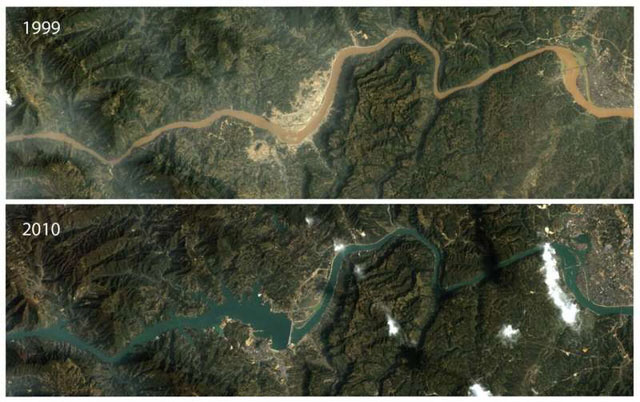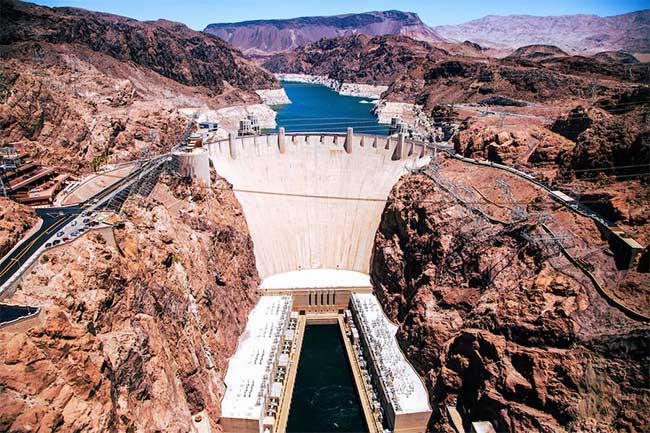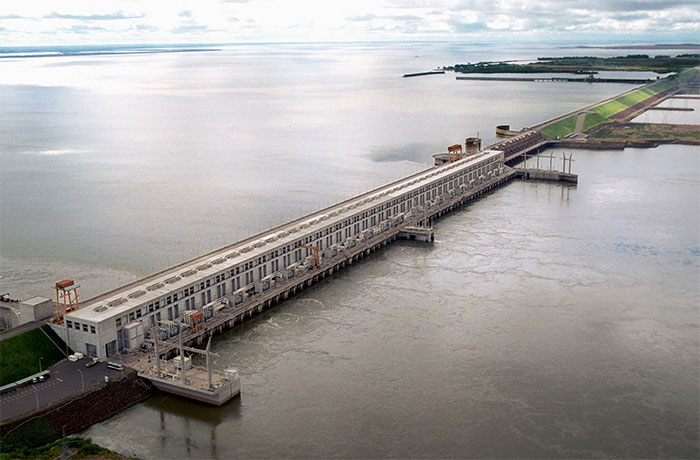In the past 40 years, humans have altered the world’s largest rivers at an unprecedented pace.
A new study from Dartmouth College in the United States, published in the journal Science, reveals that the functioning of rivers is significantly affected by the sediment they transport and its deposition.

Three Gorges Dam in China changes flow after 11 years (1999 – 2010) – (Photo: NASA)
Researchers utilized satellite images from NASA’s Landsat and digital archives of hydrological data to examine changes in sediment delivery to the oceans from the 414 largest rivers in the world from 1984 to 2020.
Lead author Evan Dethier, a postdoctoral researcher at Dartmouth, noted that the sediment load of rivers is often determined by natural processes in the river basin, such as rainfall, landslides, or vegetation.

Hoover Dam on the Colorado River, located on the border between Nevada and Arizona, is the most famous dam in the United States, standing at 221 meters – (Photo: ALBOM ADVENTURES)
Researchers found that human activities are overshadowing these natural processes, even more so than the impacts of climate change.
The findings indicate that the construction of large dams in the 20th century in the northern hydrological regions of the globe—including North America, Europe, the Eurasian continent, and Asia—has reduced the amount of suspended sediment transported from rivers to the oceans by 49% compared to pre-dam conditions.
This global decline has occurred despite a significant increase in sediment supply from the southern hydrological regions, which include South America, Africa, and Oceania. In these areas, sediment transport has increased in 36% of the rivers due to major land-use changes.

Oroville Dam in California, the tallest dam in America at 235 meters – (Photo: WATER EDUCATION FOUNDATION)
These changes are driven by human activities, such as gold mining in sediments in South America and sub-Saharan Africa; sand mining in Bangladesh and India; and palm oil plantations across much of Oceania.
In the northern regions, dam construction has been the primary factor causing changes in rivers over the past few centuries. In the United States alone, more than 90,000 dams have been built.
However, in the United States and other countries in the Northern Hemisphere, many dams are over half a century old, and fewer dams have been constructed in the 21st century. Consequently, the decline in sediment transport recently has been relatively small.

Yacyretá Dam on the Paraná River between Corrientes Province in Argentina and Ayolas in Paraguay – (Photo: WIKIPEDIA)
However, dam construction in Eurasia and Asia over the past 30 years, particularly in China, has led to a decline in sediment transport in rivers worldwide.
Co-author of the study, Francis Magilligan, a geography professor, emphasized: “This is particularly concerning for densely populated areas like Vietnam, where sediment supply has been significantly reduced due to dam activities along the Mekong River.“
Carl Renshaw, a professor of Earth sciences at Dartmouth, stated: “The activities of rivers provide quite sensitive indicators of what we are doing to the Earth’s surface—they are like a thermometer measuring changes in land and water use.“


















































